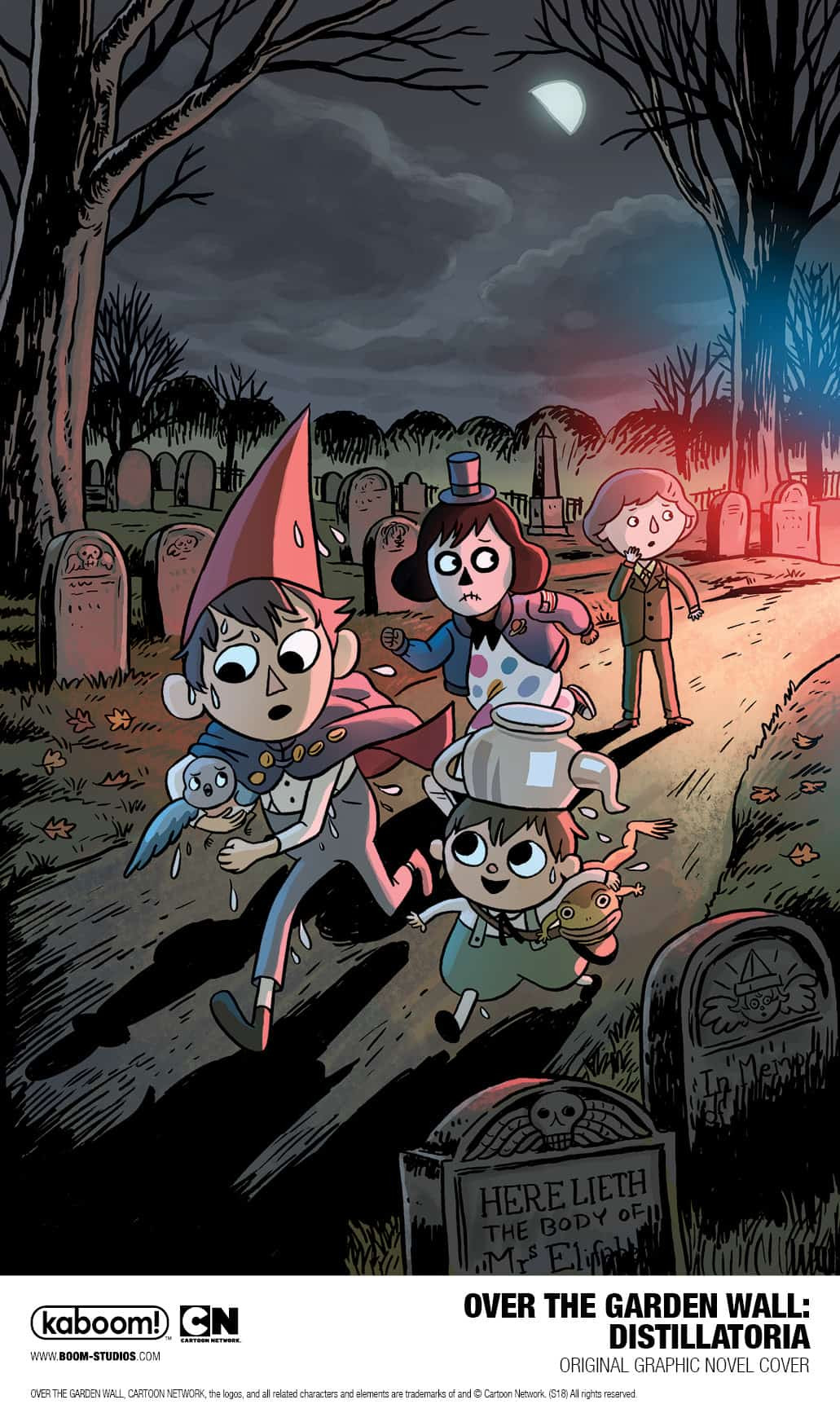“Megalopolis” is finally opening in theaters. Cinephiles have been buzzing about Francis Ford Coppola‘s latest saga for months — despite all the drama surrounding it — and now they’ll finally get to see the polarizing and bonkers film.
Lionsgate, to its credit, is trying to preserve the theatrical experience that audiences at Cannes got when it premiered. That includes one of the most talked about scenes in the film: The “Megalopolis” live scene with Adam Driver.
In the film, Cesar Catalina (Driver) is taking questions from reporters during a press conference, with his face seen in close-up. The reporter’s question to him comes from off-screen, but when the Cannes audience and others have seen it, a live person standing in the front of the auditorium has been the one fielding the questions for Catalina to respond.
It’s a cute, fourth-wall-breaking moment that has been a fan-favorite, especially when at the Cannes premiere at the Grand Théâtre Lumière, it was none other than Jason Schwartzman getting up in front of the crowd with a microphone.
That carried over in the IMAX Experience screenings on Monday night, in which the studio recruited some special guests to be the one to approach the screen and field Driver’s character a scripted question. 60 different locations that screened the film all featured a live component. For one, at the screening in Los Angeles, entertainment journalist Scott Mantz was asked to take to the front of the auditorium with a microphone.
Some fans have shared videos and photos of the moment from inside their respective screening rooms, and in some cases the guest is provided a microphone or is on a raised stage platform. In the case of a Monday screening at the AMC Veterans 24 in Tampa that IndieWire attended, there was no spotlight on the chosen audience member but a mic stand was set up from before the start of the film. The lighting situation made it hard to decipher, however, as you can see in the photo below.
When the film goes wide this weekend, IndieWire can confirm that just as with the IMAX experience screenings, select movie theaters will recruit another performer set to attend the screening, head down to the front, and take part in the live scene with Driver’s character.
Those “Megalopolis” screenings will be labeled “The Ultimate Experience” when you’re buying your tickets, and each will feature what Lionsgate is calling a “Live Participant” as part of the movie. While most will also be on IMAX or PLF screens, there are a handful of the experiences that are available on standard screens.
It’s a pretty daunting logistical challenge, so unfortunately, far from all locations and screenings will feature the Live Participant. The movie is opening on 1,700 screens this weekend and 200 IMAX locations. At time of writing, 34 different showtimes on each of Friday and Saturday will offer the Ultimate Experience, and those encompass 23 different markets in North America, though more may be added later. Those without it will have a more traditional audio track voice over subbing in place of the live person.
Rumors abounded that theater employees might be asked to step in for the moment, or that random audience members could be recruited to participate, but such options don’t seem totally feasible. TBD what happens or how you’ll be asked to participate when “Megalopolis” finally lands on home video or streaming.
On Monday, Coppola participated in an actual Q&A that was streamed live to attendees before the film, in which the auteur was in conversation with Robert De Niro and Spike Lee. Coppola went on a tangent about Donald Trump and the looming November Presidential election, saying that he feared America would end up with an “emperor” leading the country in a few months time.
“Megalopolis” is projected for a fairly modest $5 million opening weekend at the domestic box office, but reports have noted that the financial burden is on Coppola himself, not Lionsgate. Coppola self-funded the movie with a $120 million budget and now took on the marketing and distribution costs to get the film on the big screen. We’re guessing getting live performers to be part of that rollout wasn’t cheap either.
But Coppola himself wrote the textbook “Live Cinema and Its Techniques,” a 2017 book in which he posited that digital technology would enable real-time advancements and innovations in movies in the same way that talkies revolutionized the form. Now audiences get the chance to see if he’s right.
Below, you can find the full list of theater locations and showtimes offering the “Ultimate Experience” for “Megalopolis” on opening night on Friday, Sept. 27 and Saturday Sept. 28. More may be added later.
Coppola's "Megalopolis": An Epic Cinematic Vision
In the early 1980s, Francis Ford Coppola, with classics like The Godfather and Apocalypse Now under his belt, set his sights on his next magnum opus: an ambitious, fable-like drama that would draw parallels between the U.S. and ancient Rome.
But after the costly flop of his 1982 musical, One From the Heart, Coppola wasn’t able to get another big-budget labor of love off the ground, and Megalopolis languished for decades. It was only a few years ago that he returned to the project, selling off part of his wine business and putting up $120 million of his own money. Even after production wrapped, setbacks continued, from challenges finding theatrical distribution to reports that Coppola had behaved inappropriately with women on the set, which the director has denied.
Now, against considerable odds, Megalopolis has arrived, and whatever you have or haven’t heard about it, I urge you to see it for yourself. You might conclude, like some of the critics at this year’s Cannes Film Festival, that Megalopolis is an unholy mess, full of disjointed plot points, didactic ideas and muddled historical allusions — an epic folly from a once-great filmmaker who long ago lost his mojo and possibly his mind. To which I can only say that every folly should have as much guts and passion as Megalopolis. I’ve seen it twice now, and both times I’ve come away dazzled by its beauty, its conviction, and its moments of brilliance.
The Plot of Megalopolis
The story takes place in a city called New Rome, which looks a lot like New York, but with Roman flourishes, from the classical architecture to the bacchanalian parties and even a Colosseum-style sports arena. The plot essentially updates a famous Roman power struggle from 63 B.C.
Adam Driver plays Cesar Catilina, an architect and designer who longs to transform New Rome into a dazzling futuristic utopia. But Cesar is challenged by the cynical mayor, Franklyn Cicero — that’s Giancarlo Esposito — who sees Cesar as a delusional dreamer. Furthering the conflict is Cicero’s daughter, Julia, a hard-partying medical-school dropout played by Nathalie Emmanuel, who asks Cesar for a job.
There’s a speechy stiffness to Coppola’s dialogue that takes some getting used to. But the story itself is a fairly straightforward mix of romance, sci-fi noir and political thriller. Cesar does hire Julia as an assistant, and they become lovers. But many complications ensue.
There’s the mystery of Cesar’s late wife, who died years ago under strange circumstances. There’s also much dysfunctional-family drama involving Cesar’s filthy-rich banker uncle, played by Jon Voight, and a ne’er-do-well cousin — that’s Shia LaBeouf. Both men have their own sinister designs on the city’s future. And in the borderline-cliché role of an unscrupulous TV reporter, Aubrey Plaza steals every scene, as Plaza usually does.
There’s more, much more: horse-drawn chariots and nightclub unicorns, Old Hollywood-style film techniques and kaleidoscopic visual effects, wild sex and startling violence. There are also references to Pygmalion, Marcus Aurelius, Sapphic poetry and Hamlet, whose “to be or not to be” soliloquy Cesar at one point performs. He’s in the throes of an existential crisis, fearful that humanity’s time may be running out.
Time in Megalopolis
And if Megalopolis has one subject, it’s time. The characters talk about time constantly. The trippy production design is full of clocks and sundials. Cesar has the supernatural ability to briefly freeze time in its tracks, but even he cannot halt its forward march for long. Watching the movie, I couldn’t stop thinking about Coppola, who’s now 85, and his own battle with time, including the four decades he spent trying to get Megalopolis made.
But whatever resentment Coppola may feel toward an industry that has both honored and shunned him over the years, there isn’t a trace of bitterness in the movie. Cesar believes in the future, and so does Coppola. Just because Rome fell, he seems to say, doesn’t mean the world has to. Wars can end, the planet can be saved and people can choose to live in a more inclusive and equitable society.
Most of all, Coppola clearly believes in the future of movies, and that, in a medium overrun with franchises, streaming junk and AI technology, there’s still room for a big-screen work of art as grandly improbable and deeply human as Megalopolis. Like so many of Francis Ford Coppola’s movies, it truly is one from the heart.
Megalopolis: A Celebration of Hubris
The good news is that the Fountain of Youth exists. The bad news is that it costs a hundred and twenty million dollars. At least, that’s what Francis Ford Coppola paid, out of his own pocket, for his own version of it—the making of his latest movie, “Megalopolis.” But he got value for his money, judging from the result, in which he seems like a younger director than he has ever been. With its intellectual earnestness, first-person grandiosity, and aesthetic extravagance, the film is more floridly and brazenly youthful than anything else Coppola has made.
Coppola, who’s eighty-five and made his first feature in 1963, is one of the most flamboyantly gifted filmmakers of his era, but, for the most part, he has subordinated his pictorial power to dramas of tight-fitting psychology and dutiful realism that have both overwhelmed and repressed it. He became a self-consciously serious director and he rarely cut loose. A great exception—the swoonily romantic 1982 musical “One from the Heart,” which had a theatrical rerelease at the start of this year—was panned (unfairly) and bankrupted him. But with “Megalopolis” he cuts looser than ever and is able to do so precisely because he’s also more serious than ever. Coppola fills the movie with fervent, rapturous rhetoric that seems to emanate, almost in his own voice, from behind the camera, and this rhetoric fuses with the visual rhetoric of what the camera does—an aesthetic flamboyance in the movie’s visual compositions, performances, design, costume, and the scale and tumult of its spectacular action. “Megalopolis,” a movie made with hubristic ambition, is not only a tale of hubristic ambition but is indeed a celebration of it. The film is a tragedy in which everything comes out right: Coppola builds his protagonist’s absurd overreach into a foreordained happy ending, and the movie itself is a happy outcome from the very start.
A City of Dreams and Power
The subtitle of “Megalopolis” is “A Fable,” and a fabulous extravagance is proclaimed both in its premise and its action. The movie takes place in the course of a year or two some time this century, in a city that features many of the landmarks of current New York and is called New Rome. The cast of characters and a smattering of Latin words and phrases imbue this futuristic setting with conflicts and myths borrowed from ancient history. The movie’s visionary splendor and its carefree incoherence are on view in the first dramatic scene, a symbolic blast both of giddy unrealism and of aesthetic audacity: Adam Driver, stepping out onto a narrow ledge near the top of the Chrysler Building, near the decorative arches at its crown, leans out and peers down to the busy street below, lifts a leg and makes as if to fall, and then calls out, “Time! Stop!” The traffic freezes; so do the clouds drifting overhead; so, too, does Driver, keeping his foothold and tilting backward. Then he regains his footing and coolly snaps his fingers to get the world moving again.
Think about it—but not too hard. (Does he also reverse gravity?) Cinematically, “Megalopolis” is a skyscraper of cards. It’s not a chain of dominoes set up to fall with gaudy precision but a mighty contrivance magnificently envisioned yet insubstantially joined, as fragile as it is wondrous. It wouldn’t withstand a push; it would just collapse in a disastrous, unrecognizable heap. So don’t push, as only a malicious child would do. The fragility of conception isn’t a bug but a feature of this cinematic soap bubble of a dreamy wonder. Coppola offers a vision as phantasmagorical as it is absurd, as fanciful as it is exhilarating. Two things keep this contrivance held together in tenuous balance: a clear dramatic framework and Coppola’s sheer strength of feeling.
Cesar Catilina, the Visionary Architect
Driver is at the center of the movie throughout, playing the polymathic protagonist Cesar Catilina. Not only has Cesar won a Nobel Prize for inventing a sort of biological metal called Megalon; he’s also an artist, an urbanist, an architect, a political insider, and the head of New Rome’s Design Authority. He’s Robert Moses if Moses had had Leonardo da Vinci’s spectrum of talents, and his ambition is to transform the city’s neighborhoods, architecture, aesthetic, technology, and thus its very way of life. The movie’s title comes from Cesar’s name for his dream project, a city-within-the-city that will be built using his wonder substance. What he has in mind is a techno-utopia in which form and function are united, in which beauty will be matched by abundance. But that project is controversial, not least because it requires the demolition of existing neighborhoods and, at least temporarily, the displacement of their residents.
The Conflict of Vision and Pragmatism
New Rome’s mayor, Franklyn Cicero (Giancarlo Esposito), is essentially a liberal, devoted to the citizenry’s practical needs (jobs, housing, education) and leery of grand-scale projects, lest they threaten the interests of the city’s many constituencies: working people, business people, unions, banks. He opposes the construction of Megalopolis and, at a site where Cesar has demolished an apartment building (stopping time to savor the implosion), is planning an entertainment complex. But Cicero’s only child, Julia (Nathalie Emmanuel), believes in Cesar’s work and hopes to smooth matters out between him and her father. Then Julia and Cesar fall in love, incurring Cicero’s wrath and setting up a mighty clash in civic and romantic dimensions.
A Family Affair of Power and Betrayal
Coppola’s imagination is excited above all by the volatile intersection of power and family, and that’s the principle with which he builds out the movie’s prime conflict. Cesar’s uncle, Hamilton Crassus III (Jon Voight), is the city’s richest man. Cesar’s girlfriend, at least at the start of things, is Wow Platinum (Aubrey Plaza), a flashy TV business reporter known as the Money Bunny, who is frustrated; she wants to be “half of a power couple” but Cesar works alone. Instead, she marries Crassus for his money, which she contrives to get control of, despite a prenup, with the help of another of his nephews, the craven Clodio Pulcher (Shia LaBeouf), a populist politician who riles up public sentiment against Megalopolis and launches a defamatory campaign against Cesar.
A Cast of Characters, Big and Small
The stark solidity of the rivalries and the fixed severity of the characters’ conflicts are built on an underpinning of extravagant fantasy that’s a mere wink away from comedy; the story may as well involve the rivalry of Bugsius Bunnilina and Mayor Elmyr Fuddero. What rescues it from cartoonishness is the authentic grandeur and crazed gravitas that the actors bring to their roles—and the many inventive dramatic fillips and flourishes that Coppola devises for them to strut their stuff with. Driver, from the day he hit the screen in “Girls,” has been among the most imaginative and spontaneous of actors, and his performance in “Megalopolis” is as essential to the movie’s freewheeling inventiveness as is the role he plays. His Cesar is more than a genius of art and science; he’s a creator of moments themselves, dominating public and private arenas with a showiness that’s redeemed by style. At a press conference of Mayor Cicero—reported live by Wow—Cesar roves around, a Dracula-like presence under a black cape, before emerging to deliver, of all things, one of the finest renditions of Hamlet’s existential soliloquy that the movies have yet offered (a scene to rival Charlie Chaplin’s fierce rave of it in “A King in New York”).
The sassy swing of a sequence in Cesar’s studio, with his entire staff collaborating in efforts closer to play than to labor, has the feel of a Vincente Minnelli set piece, with the long-limbed Driver doing dancelike maneuvers in a swivel chair. As Cesar prepares to show Julia the wonders of his scientifico-artistic contrivances, he changes jackets, with the aid of an assistant, Fundi Romaine (Laurence Fishburne)—who’s also a historian recording the events at hand—and the elegant shiver of his shoulders invests the instant with momentousness. Yet at a moment of physical and emotional agony, Driver is also capable of rending the screen with a simple repeated one-syllable incantation that constitutes one of the most indelible inflections I’ve heard in a movie.
The actors all seem to be having the time of their lives. As Wow Platinum (whose name has an origin story too snappy to spoil), Plaza brings a coruscating intensity to machinations in the bedroom and the boardroom, as well as brazen flair to her character’s on-the-air allure. Voight is gruffly, fiercely Shakespearean in his worldly crudeness; LaBeouf brings a lizard-like protean desperation to Clodio’s needy stratagems; and, as Cicero’s wife, Teresa, Kathryn Hunter gets a welcome and radiant turn displaying warmth, curiosity, tenderness, and physical delight. (She even gets to dance—with Jason Schwartzman, as Cicero’s bandmaster, playing drums.) Emmanuel, as Julia, is winningly plainspoken and thoughtful, even as she brings a lyrical lilt to the most exquisitely designed scene in the movie, a skyhigh romantic reunion on cable-dangling girders.
A Visual Feast for the Senses
Though much of “Megalopolis” is wildly subjective and built from hallucinatory effects, the movie’s relentless energy is captured in images that are graphically eye-catching and straightforwardly composed. Coppola’s work shows in their imaginative power, produced by way of unexpected and revelatory angles and graceful gestures that are heightened by the simplicity with which they slip onto the screen. Even at the start, a few sharp camera glances catch both the vast skies over Cesar’s head and the slippery-soled shoes on his feet.
Some of the rapid-fire action, violent and insolent, is realized with mercurial editing that also spotlights the high-relief images that it joins. The most grandiose compositions are reserved for displays of Megalopolis, starting as a work in progress and culminating in a vision of the cosmic that combines startlingly biomorphic forms with eerily flowing motion and a palette of colors and a style of glowing light that are as unnatural as they are seductive. The movie’s physical design, its costumes, and its accessories are as showily assertive as the images and the performances—not to mention the hulking old-school Citroën in which Cesar tools around town, the gold headdress that Wow dons for a costume party, and a touchless floating ball that’s Julia and Cesar’s domestic toy.
A Touch of Reality in a Dreamlike World
Subplots proliferate, involving dark suspicions from the past, fake news from the present, legal troubles issuing from both, and the documentary evidence that underlies them. Cesar, who’s widowed, is deeply devoted to the memory of his late wife, and his touchingly, melodramatically fervent demonstrations of enduring devotion are echoed in Coppola’s onscreen dedication of the movie to his wife, Eleanor, who died in April. There’s also a brief but jolting live-performance element that, though peripheral to the plot, is crucial to the experience—a moment of theatrical interaction with the filmed image, which highlights the immediate physicality from which even the most elaborate cinematic images are made.
The movie only gets clumsy when dealing with something of which Coppola has little recent experience: ordinary life. The everyday people (which is to say, extras) whose homes are demolished to make room for Megalopolis; or who appear destitute on ravaged streets late at night in an obscure neighborhood that Cesar happens to be passing through; or who support Clodio’s political campaign (up to a point)—these are caricatures, even stereotypes, and get almost no screen time. I wanted to know what they may have noticed, or not, when Cesar stopped time and thus stopped them in their tracks.
A Humanistic Vision of Utopia
“Megalopolis” rises to its philosophical climax with speechifying in a vein of eyerollingly adolescent humanism. Its open-minded sincerity is coupled with a vision that’s less a matter of joyful creativity than of what Cesar calls debate, and which brings to mind bureaucratic conferences and PowerPoint presentations—a utopia in which the plenitude of art and science supplied from above yield earnest, well-meaning boredom. But there’s nothing boring in Coppola’s realization of this culminating drama, and none in Driver’s declamatory enthusiasm. The romantic visionary gets an exultant sendoff in a sentimental display of family life on the public stage, Coppola’s own personal utopia. Ultimately, the contradictions at the heart of “Megalopolis”—the incompatibility of the order of art and the loose ends of life, the artist’s unifying imperatives versus society’s centrifugal uncertainties—remain unexamined, unexplored, merely papered over in a mighty paean to harmony and progress through reason and inspiration. Still, for a hundred and twenty million, a kid can dream big. ♦
A Dream of a City, a Dream of a Film
It is a grand, flawed, and utterly captivating vision of a city, a film, and perhaps even the future. Francis Ford Coppola's “Megalopolis” is not for everyone, but it is a testament to the audacity and passion of a filmmaker who refuses to be tamed by the limitations of time or convention. The film is a powerful reminder that even in a world of CGI and streaming, there is still room for cinematic dreams to be realized on the big screen.
For the uninitiated, it’s important to be prepared for the fact that this is a movie that defies easy categorization. It is a blend of science fiction, romance, political thriller, and historical allegory, all infused with Coppola’s signature blend of theatricality and visual grandeur. Expect the unexpected, and above all, be ready to be swept away by the sheer force of Coppola’s vision. Because whether you love it or hate it, “Megalopolis” will leave a lasting impression.

















